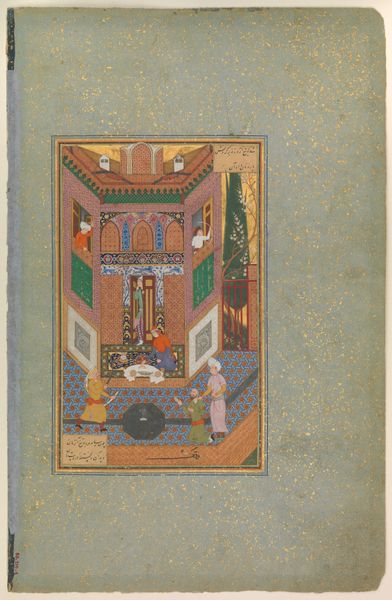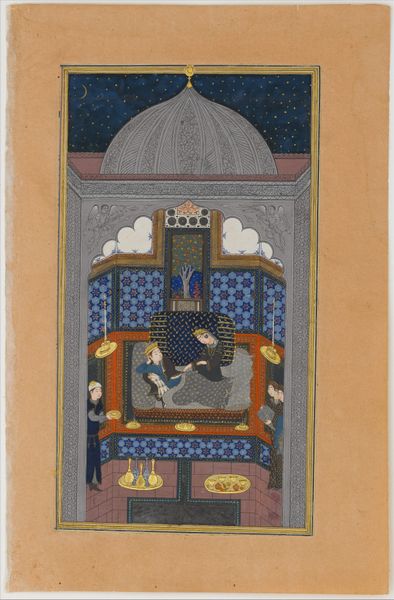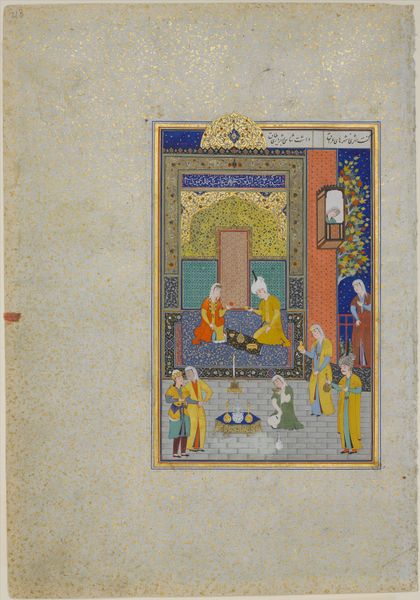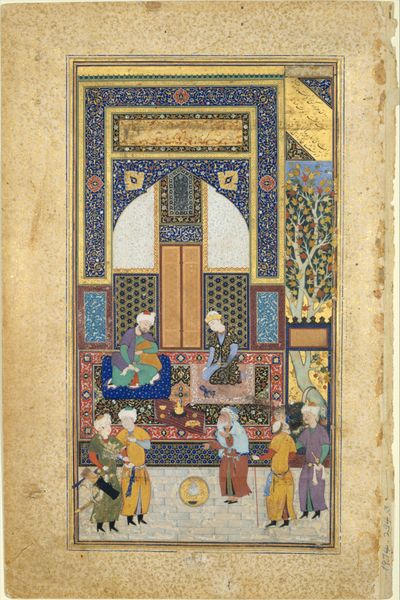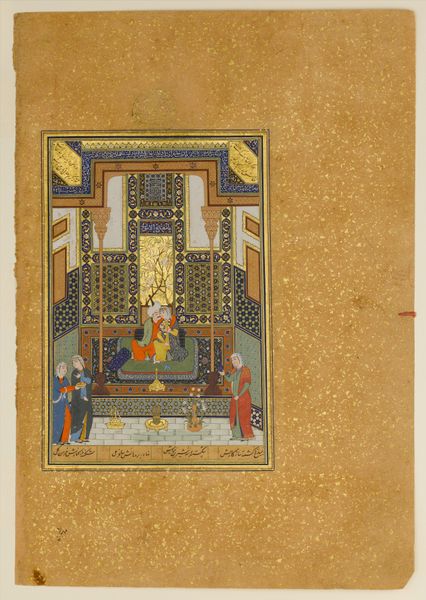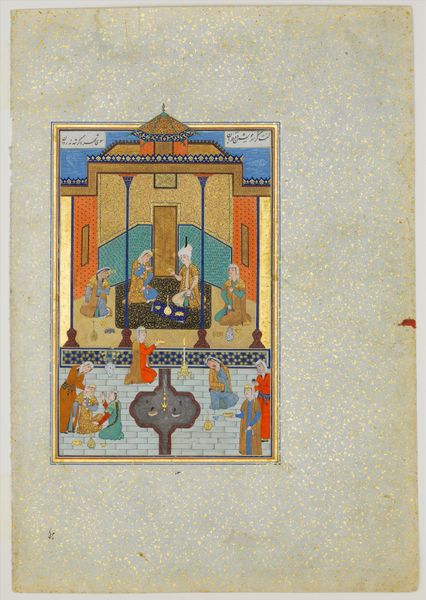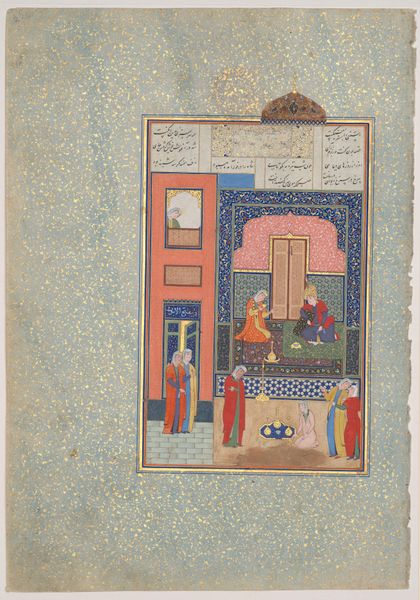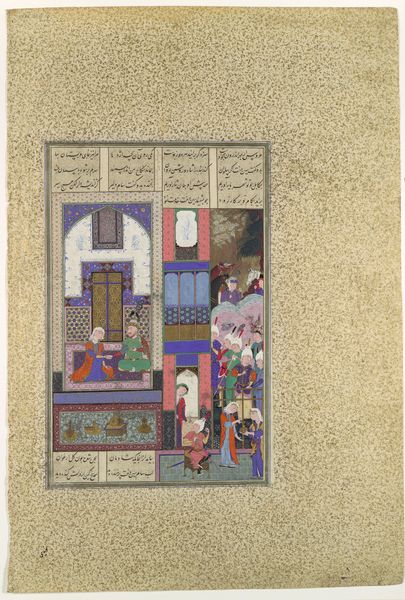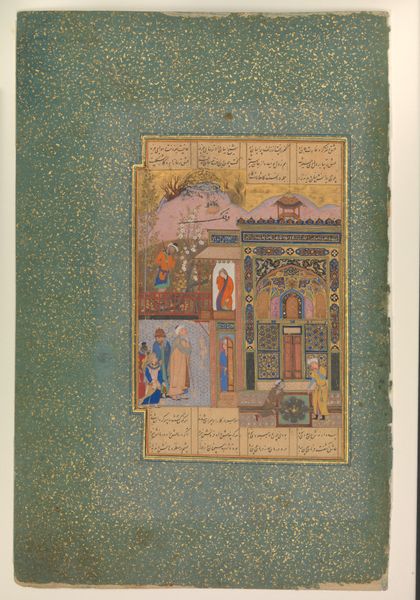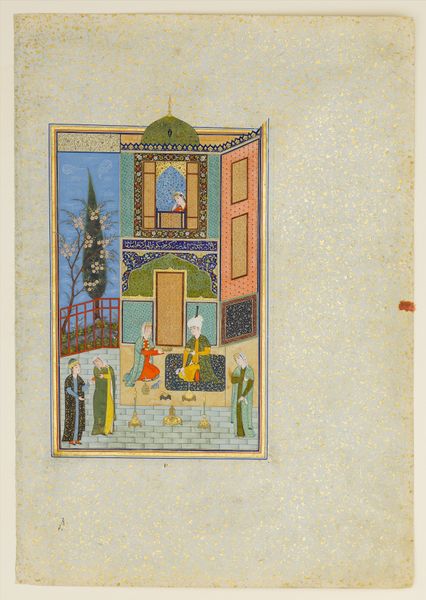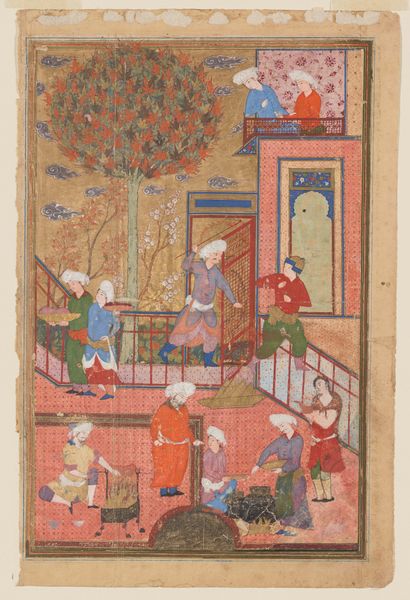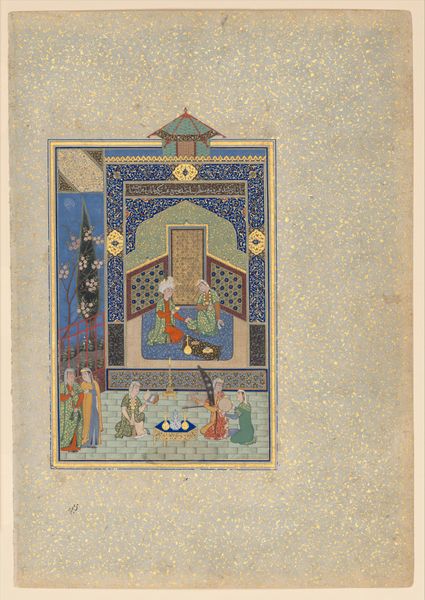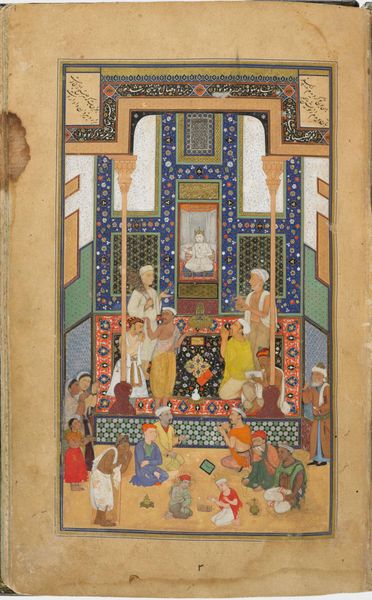
"Bahram Gur in the White Palace on Friday", Folio 235 from a Khamsa (Quintet) of Nizami of Ganja 1500 - 1550
0:00
0:00
painting, watercolor
#
narrative-art
#
painting
#
landscape
#
figuration
#
watercolor
#
coloured pencil
#
orientalism
#
islamic-art
#
miniature
Dimensions: Painting: H. 8 13/16 in. (22.4 cm) W. 4 1/2 in. (11.4 cm) Page: H. 12 5/8 in. (32.1 cm) W. 8 3/4 in. (22.2 cm) Mat: H. 19 1/4 in. (48.9 cm) W. 14 1/4 in. (36.2 cm)
Copyright: Public Domain
Editor: This watercolor, "Bahram Gur in the White Palace on Friday" from a Khamsa by Nizami of Ganja, created sometime between 1500 and 1550, feels so meticulously constructed, like a stage set. What strikes you about this miniature, and how do you interpret its narrative? Curator: What stands out is the potent mix of opulence and constraint. The geometric tilework, the gold embellishments, signify power and wealth, yet the figures seem almost confined within the architecture. Consider the Khamsa's function; these stories, while entertaining, often served as moral instruction for rulers. Bahram Gur, celebrated as a great hunter and warrior, is here participating in a tradition – Friday storytelling. The narrative underscores how even powerful figures are embedded in socio-political systems. What does the woman's pose suggest to you? Editor: She's kneeling, very submissive. I initially saw it as simple respect, but now I wonder if there is a power dynamic being emphasized? Curator: Precisely. Gender is undeniably performative here. Her posture speaks volumes about the expected roles within the courtly setting. Think about how this scene was intended to be viewed, likely by members of the elite class. This wasn't mere decoration; it was reinforcing a specific worldview, normalising behaviours around hierarchy and even gender. Who do you think had the most power? Editor: The King, of course, and, through that lens, this becomes a visual manifesto of its time and location, solidifying pre-existing social conventions. Curator: Exactly, recognizing those elements helps us better understand the layers of cultural ideologies within art history. Editor: It’s interesting to consider how visual arts reinforced, or potentially challenged, social power, and in a broader view, helps shape history as we perceive it. Curator: Indeed. Considering these images are not just beautiful but also complex negotiations of identity and authority really enhances their historical weight.
Comments
No comments
Be the first to comment and join the conversation on the ultimate creative platform.
